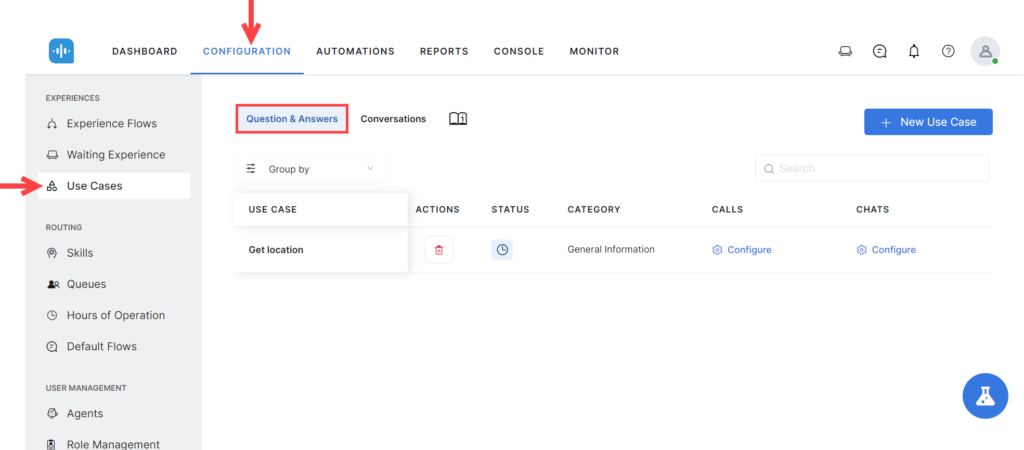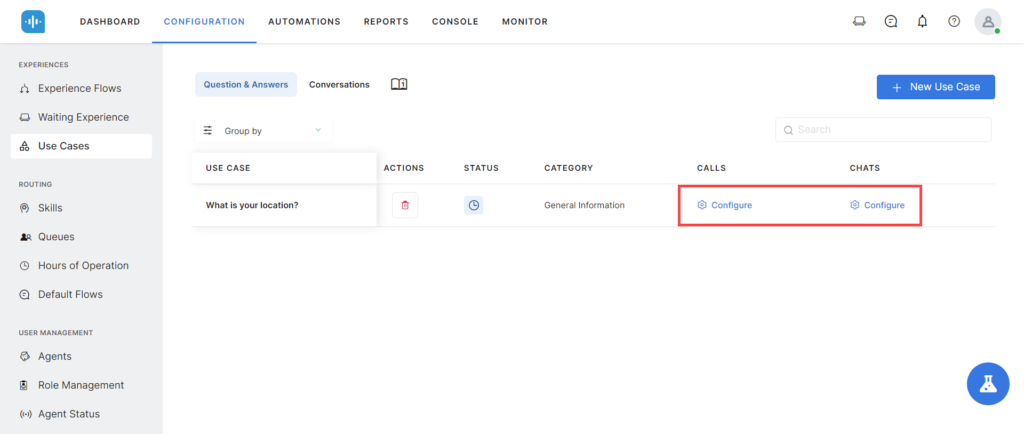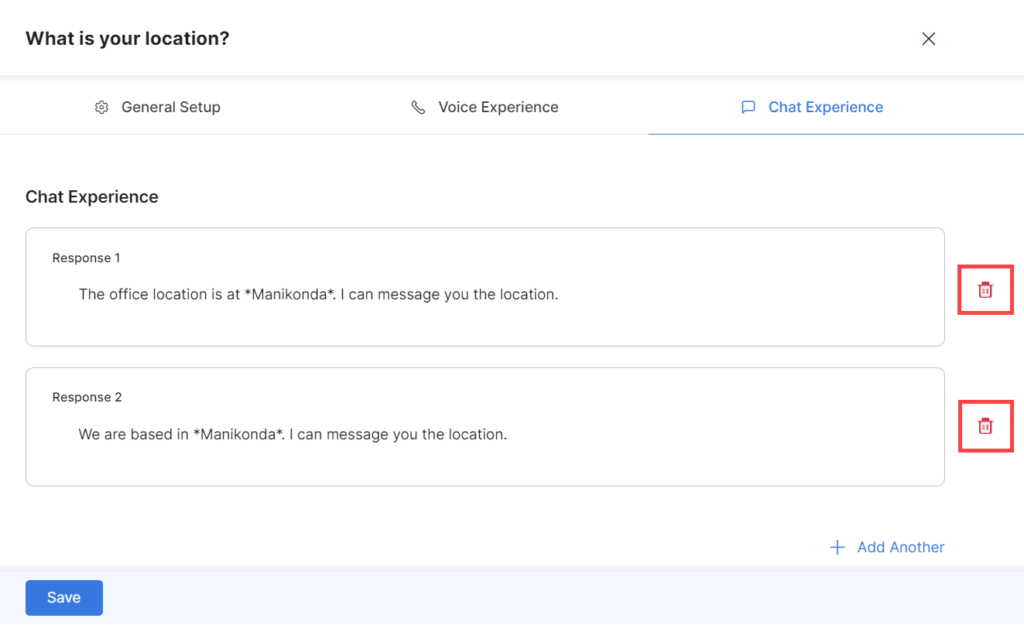Questions & Answers (Q&A) are useful in scenarios where user queries are answered by a single response over Voice,Chat or both. They are used to configure simple queries, such as business working hours or contact details. The behavior is defined differently for voice and text modes. You can configure frequently asked questions and answers and SmartAssist behavior over phone and chat channels.
The Q&A Live Board
You can find Q&As in SmartAssist under Configuration > Experiences > Use Cases Questions & Answers.
The fields displayed in the Questions & Answers tab are as follows:
| Field | Description |
|---|---|
| Use Case | The name of the use case. |
| Actions (Delete Icon) | This option lets you delete the Q&A entry. |
| Status | Displays the status ‘Published’ if the Q&A has been published; otherwise, it displays ‘In Development’. |
| Category | The question category for the given use case. |
| Calls/Chats | Displays the Configure button to define the call and chat experience responses for the Q&A. |
If you have more than one bot, your list of available bots is displayed at the top left of the Use Cases section. Use the dropdown to search and/or select the bot to work with.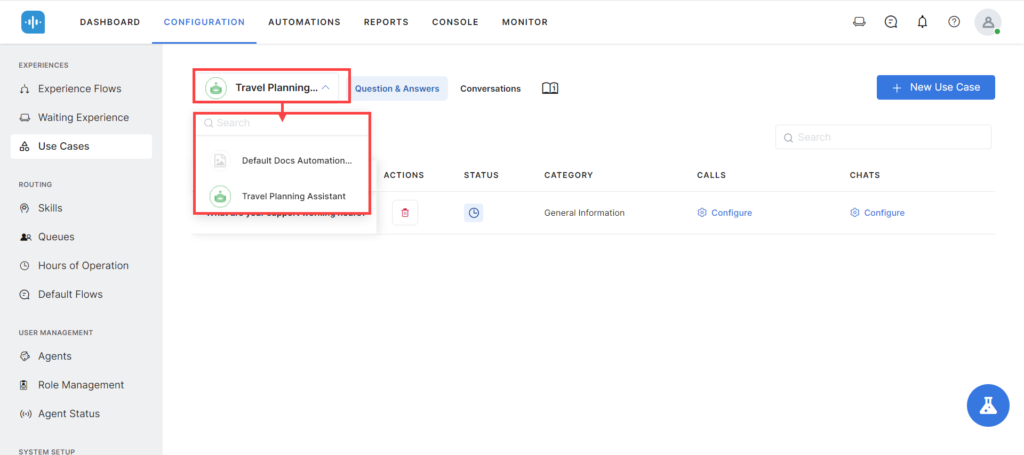
Q&A Entry Information
- Use Case Name – Use Case Name or the Primary Question is the question that customers typically use for their queries. For example, a customer looking for directions to a given business would ask – How do I get to your South Beach office?
- Category – The Category is a way for you to classify Use Cases based on whether they involve: General Information, a Business Inquiry, or a Transaction. You can also set this to No Category or choose not to make a selection.
- Alternate Utterances – You can improve matching the user’s intent with the use case by adding alternate utterances like – Where is your South Beach office?
- Voice Experiences – The Voice Experience is the response that customers receive when calling.
- Chat Experience – This is the experience a customer receives when they reach SmartAssist over a chat medium such as a widget hosted on a website.
Q&A Live Board Features
In the Q&As list view page, you can perform more actions as follows:
- Use the Group by drop-down to arrange questions into groups based on None, Category, or Status (In Development/Published).

- Use the Search option to enter matching words and search for a specific question.

- Click on any Question to modify the settings.

- To delete a Question, click the Delete (bin) icon under Actions.
Note: Deleted entries cannot be restored. Please proceed with caution.
Add a New Q&A Use Case
If you want to configure the responses under call and chat experiences for a new Questions & Answers use case, follow these steps:
- Navigate to Configuration and click Use Cases in the left menu bar.
- On the Use Cases page, the Questions & Answers tab is selected by default.
- Click the + New Use Case button.
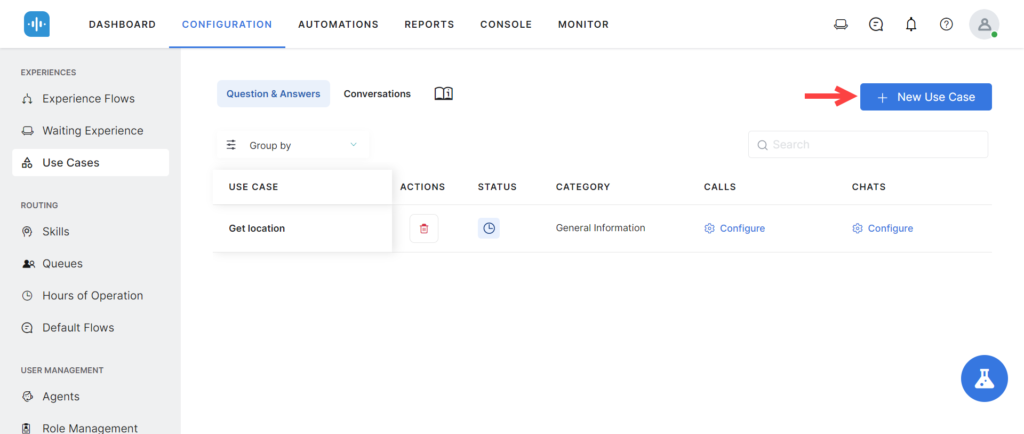
- The New Use Case panel is displayed and the General Setup tab is selected by default.

- Enter the Use Case Name and select a Category.
Note: In the Category field, enter a category or select a category from the list. This helps you organize the Q&As for easy management. You can update this field anytime after creating the Q&A entry. - Enter user Utterances. Press Enter/Return after typing in each utterance.
- The number of existing utterances is displayed at the top left of the section.
- Use the Search box to find a specific utterance in the list.
- To add another utterance, click + Add another or type it into the new Utterance field after adding the previous one.
- If you want to delete any utterance, click the Delete (bin) icon provided next to the utterance.

- Click Save to save the Use Case. Once saved, the use case will display on the Q&A live board.

Configure Voice and Chat Experiences
After you add use cases, you can complete the configuration under the Voice Experience and the Chat Experience tabs or you can save the use case and click Configure in the Calls and Chats columns.
To configure Chat and Voice Experiences for a Q&A entry, perform the following steps:
- On the Use Cases page, under the Questions & Answers tab, you can find the list of questions added.
- For Voice Experience, click the Configure link under the Voice Experience column and enter the Response that users hear during a call.
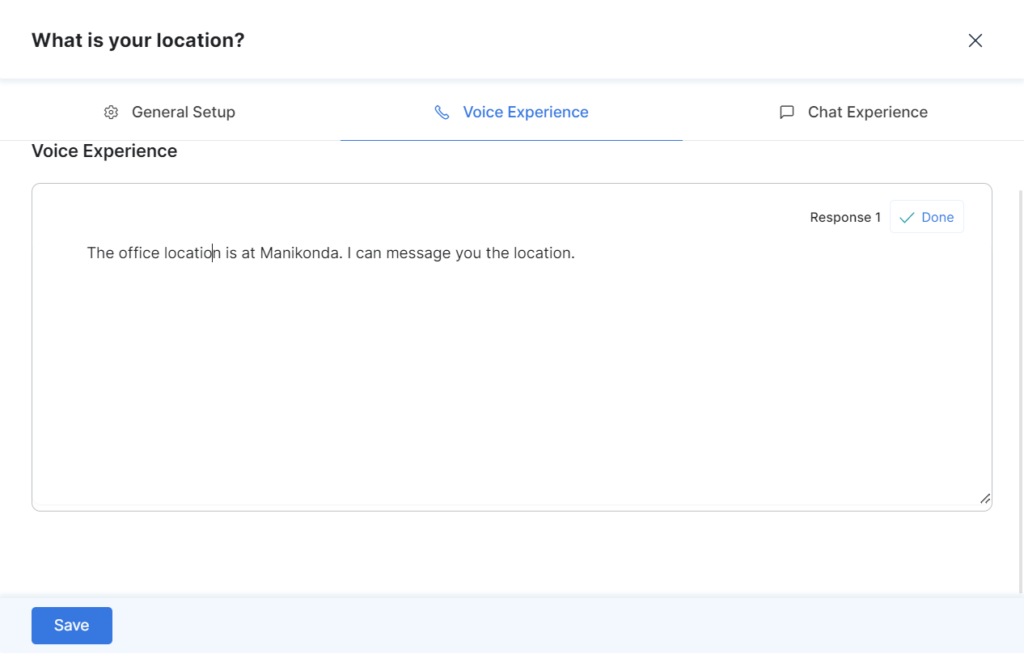
- Click ✓ Done when ready, then click + Add Another if you want to add one more response.
- Click Save.
- For Chat Experience, click the Configure link under the Chat Experience column and enter the Response that the user receives over the chat interface.
- Click ✓ Done when ready, then click + Add Another if you want to add one more response.
- Click Save. The Use Case is successfully updated.
| Note: For Voice Experience or Chat Experience, at least one response is mandatory. If more than one response is available, the Delete icon is enabled. You can delete a response if required. SmartAssist randomly selects the response to be displayed to the user when multiple alternatives are available. |
Publish a Q&A Use Case
Use Cases must be published to be made available live for customers. Q&A Use Cases reflect as Knowledge Graph FAQs within the XO Platform, as part of the bot you selected when creating the Use Case in SmartAssist. For example, if your Q&A Use Case was added to a “Default Customer Service Automation Bot” in SmartAssist, then the XO Platform will display it as a Knowledge Graph FAQ within the same bot.
To publish a Q&A Use Case, follow these steps:
- In SmartAssist, go to Automations.
- Select the bot to which you want to add the Q&A Use Case.
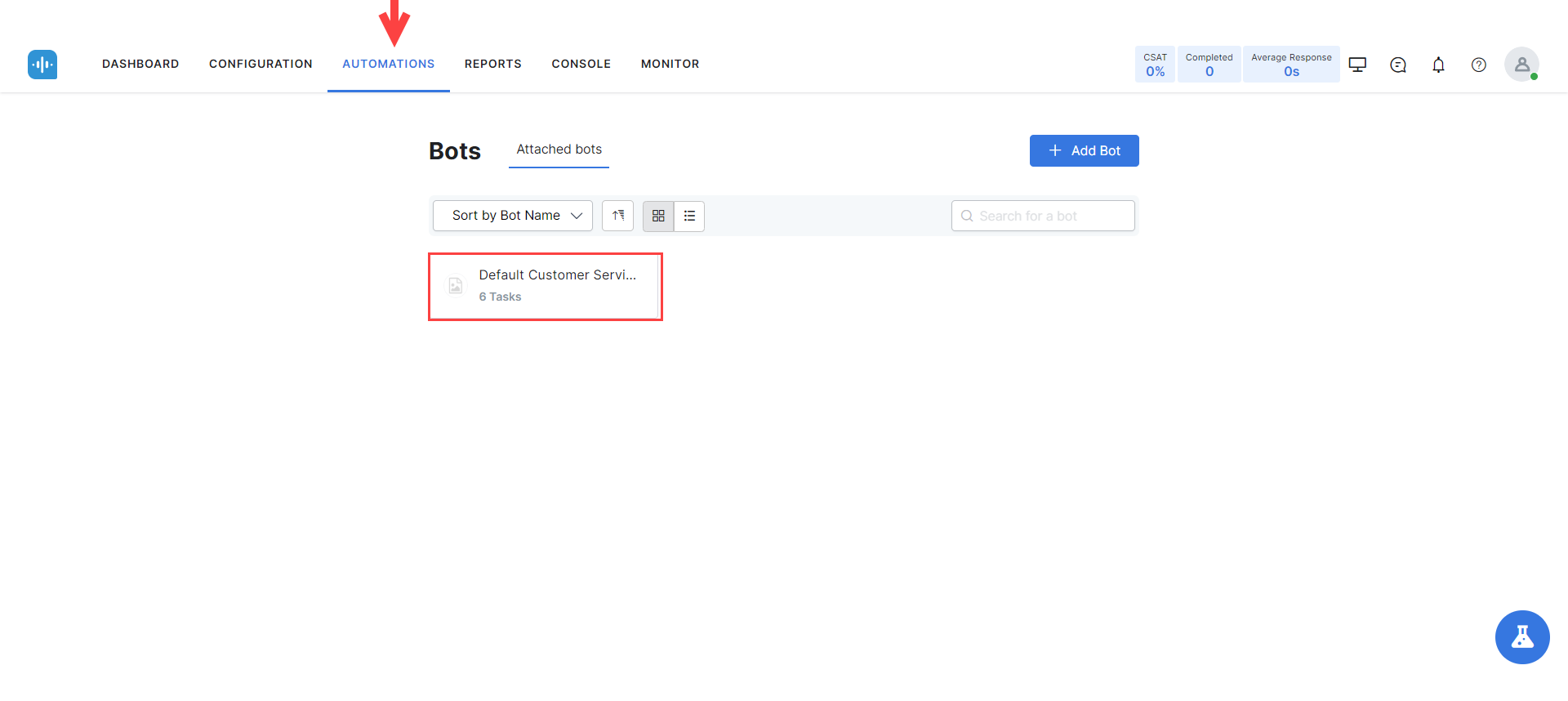
- The XO Platform opens within the Automations tab. Go to Conversation Skills > Knowledge Graph.
- Click Manage KG.

- When the Knowledge Graph opens, the Q&A Use Case is displayed as an FAQ. Before publishing, you can organize these FAQs and train your bot on the Knowledge Graph.

- When ready to publish, go to Deploy > Publish, still within the XO Platform.
- Expand the Tasks and ensure that the Knowledge Graph task is selected.

- Click Proceed when ready.
- Enter a comment related to your publish request, then click Confirm. The publishing process follows your configuration within the XO Platform. You may need to wait for an administrator to approve your request. Learn more.

- Once the bot is published, you can test your Q&A Use Case. Learn more about testing bots in the XO Platform.
